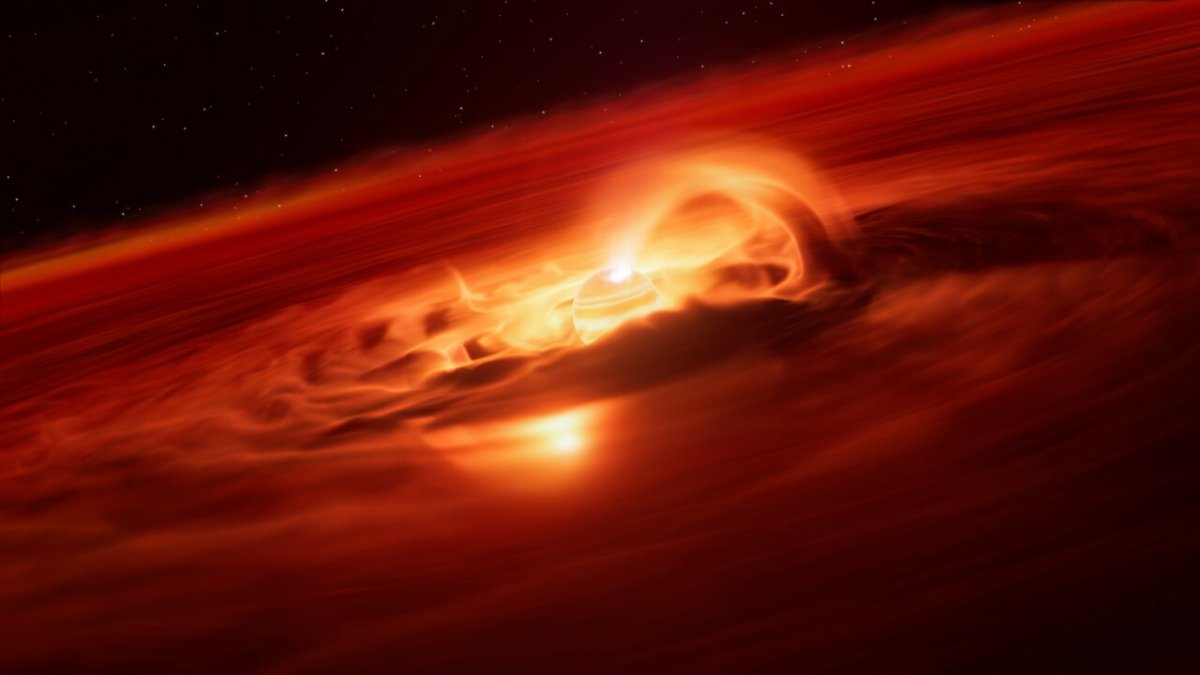Astronomers have discovered a massive “rogue planet” that is growing by six billion tonnes per second — the fastest rate yet seen for a distant world.
The planet, Cha 1107-7626, is about 620 light years away in the constellation Chamaeleon. Not tethered to any star, it is ploughing its own course through the cosmos, and is five to ten times more massive than Jupiter, the largest planet in our solar system.
A study based on observations by the European Southern Observatory’s Very Large Telescope (VLT) suggest it is still growing, at rates reaching six billion tonnes a second, pulling material from the vast disc of gas and dust that surrounds it.
• Butterfly Nebula gives a glimpse of how our sun may die
As it pulls in the material, it creates a hot spot on the planet’s surface that is visible to the VLT’s instruments.
The observations show that the planet is now accreting matter about eight times faster than was seen a few months ago. Astronomers gathered clues about the nature of this accretion process by comparing the light emitted by the object before and during this burst.
Accretion is the process by which matter accumulates due to gravitational attraction, forming larger and larger celestial bodies such as stars and planets. Remarkably, magnetic activity appears to have played a role in driving the dramatic infall of mass towards Cha 1107-7626, something that has previously been observed only in stars.
Rogue worlds are rare and enigmatic. Aleks Scholz, an astronomer at the University of St Andrews and a co-author of the study, said: “The origin of rogue planets remains an open question: are they the lowest-mass objects formed like stars, or giant planets ejected from their birth systems?”
• Comet? UFO? Astronomers puzzle over fastest object in solar system
The findings indicate that at least some rogue planets may be formed in a similar way to stars, since similar bursts of accretion have been spotted in young stars before.
Belinda Damian, also an astronomer at the University of St Andrews, said: “This discovery blurs the line between stars and planets and gives us a sneak peek into the earliest formation periods of rogue planets.”
The researchers have also revealed temporary changes in the chemistry of the disc of dust and gas that is feeding the planet, including the appearance of water vapour.
The discovery, published in The Astrophysical Journal Letters, was made with the X-shooter spectrograph on the VLT, which is located in the Atacama desert in Chile. The team also used data from the James Webb Space Telescope.
Free-floating rogue worlds are difficult to detect, but the European Southern Observatory’s Extremely Large Telescope, which is under construction nearby, promises to reveal more of these wanderers when it begins surveying the skies, hopefully in 2028. “The idea that a celestial object can behave like a star is awe-inspiring,” said the observatory’s Amelia Bayo.
“It reminds us that even the most familiar cosmic categories can surprise us.”
